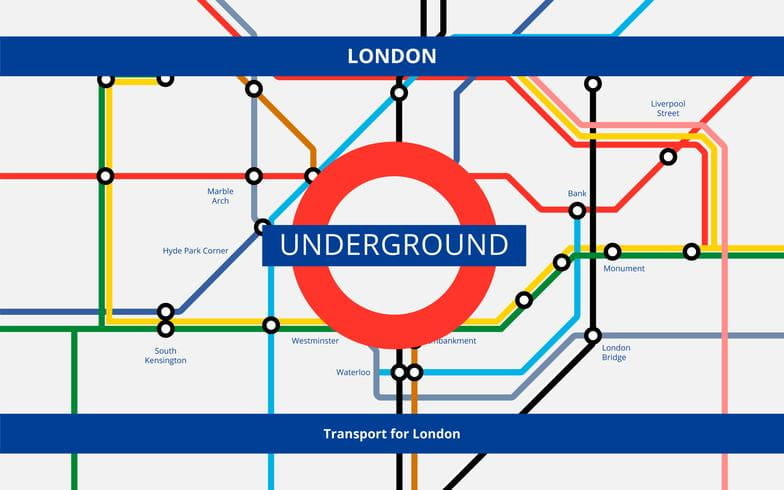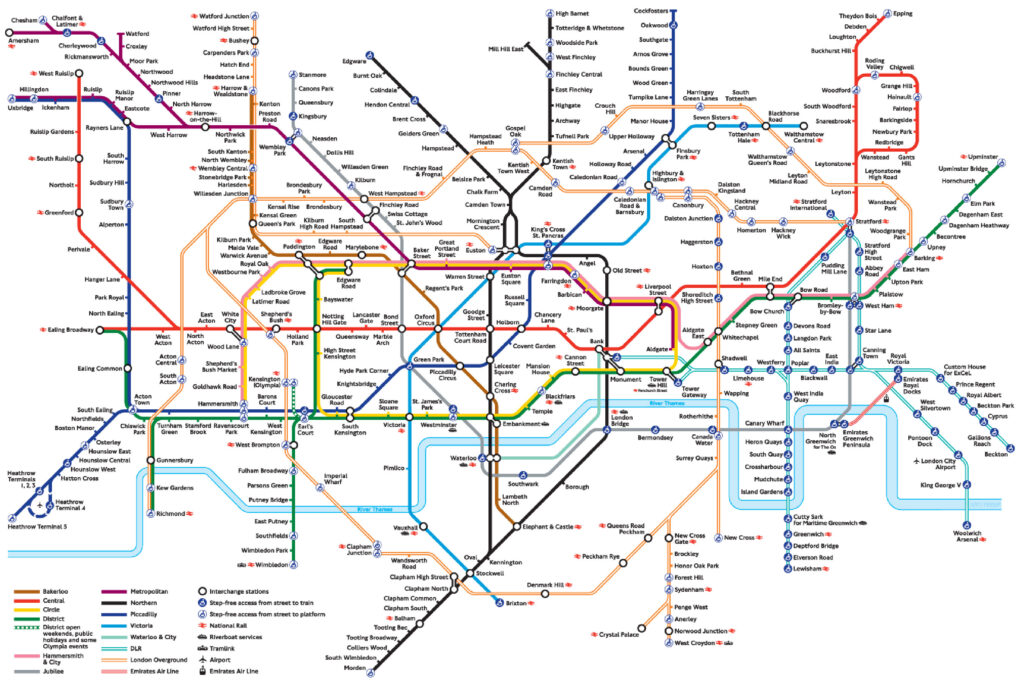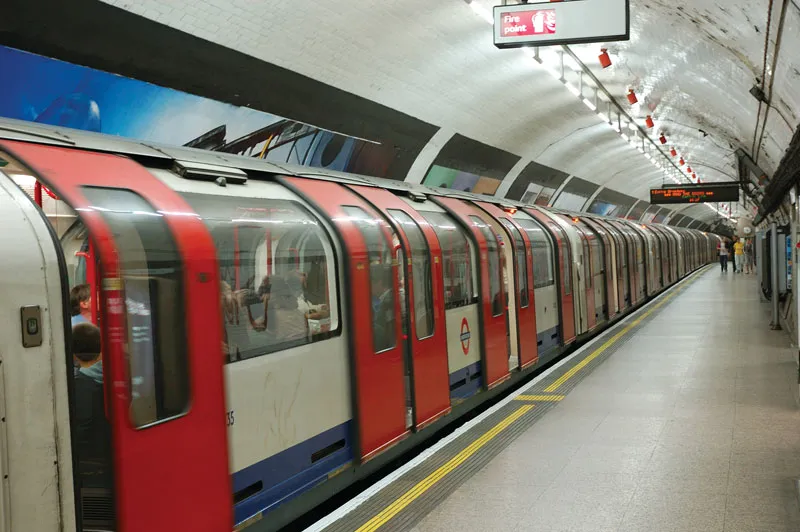London Underground & City Transport – A Step-by-Step Guide for Visitors and Expats
Learn how to use the London Underground and transport system. Step-by-step guide for visitors and expats: Oyster vs contactless, zones, fares, buses, and airports.
Why You Need a Transport Guide to London
London is one of the busiest cities in the world, and its transport network is both powerful and intimidating. For tourists arriving from abroad and expats settling into city life, understanding how the London Underground, buses, trams, and trains work can save time, money, and frustration.
This guide will walk you through tickets, fares, Oyster vs contactless cards, airports, buses, accessibility, and common mistakes, so you can move like a local from day one.
- Understanding the London Transport System
London’s network is operated mostly by Transport for London (TfL) and includes:
The Underground (the Tube): 11 lines covering central and suburban areas.
Elizabeth Line: A fast, modern train line linking Heathrow, central London, and beyond.
Overground: Rail services connecting outer boroughs.
DLR (Docklands Light Railway): Driverless trains in East London.
London Buses: 24-hour network covering the whole city.
Trams: Serving Croydon and South London.
National Rail/Thameslink: Suburban and intercity connections.
River Bus (Uber Boat): Thames services with great sightseeing views.
- Zones & How Fares Work
London is divided into nine fare zones:
Zone 1 is the central core (West End, City).
Zones increase outward (2, 3, 4… up to 9).
Your fare depends on:
Which zones you travel through.
The time of day (peak or off-peak).
The method of payment (Oyster, contactless, Travelcard).
Peak times: 06:30–09:30 and 16:00–19:00, Monday–Friday.
Off-peak: Cheaper fares outside these hours, plus weekends and holidays.
- Contactless vs Oyster – Which to Choose?
Contactless (Best for Most Tourists):
Use your debit/credit card, smartphone, or smartwatch.
Daily and weekly fare capping applies automatically.
No need to top up.
Oyster Card (Good for Visitors Without Contactless):
Buy for £7 (non-refundable fee).
Load with pay-as-you-go credit or Travelcards.
Refund unused credit when leaving London.
Rule: Each person needs their own card/device. You cannot share one card.
- Step-by-Step: Taking Your First Tube Journey
- Plan Your Route: Use TfL Go, Google Maps, or Citymapper.
- Enter Station: Follow signs for your line’s colour and direction.
- Tap In: Touch your card/phone on the yellow reader at the gates.
- Boarding: Let passengers off first; keep to the side.
- Etiquette: Stand on the right of escalators; walk on the left.
- Tap Out: At your destination, tap the yellow reader again.
- Check Fare: Daily caps ensure you don’t overspend.
Buses: Only tap in when boarding (no need to tap out).
- Daily & Weekly Fare Capping
Daily Cap: Maximum charge in a day. Travel more, pay no extra after the limit.
Weekly Cap: Monday–Sunday. Contactless automatically caps; Oyster requires a 7-Day Travelcard.
Bus & Tram Cap: £5.25 per day, unlimited rides.
- London Buses – Cheap & Scenic
Flat fare: £1.75 per ride.
Hopper Fare: Unlimited bus/tram rides within one hour for one price.
Night Buses: Run all night when the Tube is closed.
Best sightseeing routes: 9, 11, 24 (cheap alternatives to tour buses).
- Heathrow & Other Airports – How to Reach Central London
Heathrow:
Elizabeth Line: ~28 minutes to Paddington (£13.90).
Piccadilly Line (Tube): ~50 minutes to central (£5.60).
Heathrow Express: 15 minutes to Paddington (expensive).
Gatwick: Thameslink/Express trains to Victoria, London Bridge, or St Pancras.
Stansted: Stansted Express to Liverpool Street (~48 mins).
Luton: Luton DART + Thameslink to St Pancras.
City Airport: Direct DLR connection.
- Other Modes of Transport
Elizabeth Line: Great for Heathrow and east–west journeys.
Overground: Perfect for outer suburbs; orange lines on maps.
DLR: For Canary Wharf, Greenwich, and East London.
Thameslink: Runs north–south across the city; handy for Gatwick.
River Bus: Scenic but pricier than Tube.
Santander Cycles: Bike hire, £3.50 day pass.
E-Scooters: Only rental scooters are legal.
- Accessibility – Step-Free Travel
Many stations are step-free from street to platform.
TfL publishes a Step-Free Tube Map.
Staff provide “Turn Up and Go” assistance.
Buses all have wheelchair ramps and spaces.
- Rules, Safety & Etiquette
Always tap in/out with the same device.
Stand on the right on escalators.
Keep bags off seats and avoid blocking doors.
Offer priority seats to elderly, pregnant, or disabled passengers.
Trains are safe but keep valuables close.
Late nights: Use Night Tube (Fri/Sat) or Night Buses.
- Step-by-Step Itinerary Examples
Heathrow to Covent Garden:
Elizabeth Line to Tottenham Court Road, short walk.
Or Piccadilly Line direct to Covent Garden.
Tower of London to Notting Hill:
Circle Line westbound direct.
Camden Market to Greenwich:
Northern Line to Bank → DLR to Cutty Sark.
- Common Mistakes to Avoid
Mixing payment methods (tap in with phone, tap out with card).
Forgetting to tap out (charged maximum fare).
Assuming buses accept cash (they don’t).
Travelling in peak hours unnecessarily (more expensive).
Card clash: Keep cards separate when tapping.
- Family & Group Travel
Children under 11 travel free with a fare-paying adult.
Ages 11–15: Zip Oyster with discounts.
Visitors can pre-order a Visitor Oyster Card before arriving.
- Late-Night Travel
Night Tube on Victoria, Central, Jubilee, Northern, Piccadilly lines (Fri & Sat nights).
Night Overground in East London.
24-hour buses cover all areas.
- Journey Planning Tools
TfL Go app – live Tube map, lift status, and disruption updates.
Google Maps – easy for step-by-step navigation.
Citymapper – best for locals and expats (shows cost and time).
- Refunds & Penalties
Overcharged? Apply for a refund online or via TfL Go.
Penalty fare: £80 if caught without a valid tap or ticket.
Always check the gates beep green on entry/exit.
- Taxi & Ride-Sharing Options
Black Cabs: Licensed, can use bus lanes. Pay by card.
Uber & Bolt: Widely available; good at night.
For groups with luggage, compare cost vs multiple Tube tickets.
- Quick Tips for Visitors
Travel after 09:30 for cheaper fares.
Carry a portable charger if relying on your phone to tap.
Always check engineering works on weekends.
Buy an Oyster only if you don’t have a contactless card.
- FAQs
Is contactless cheaper than Oyster?
They’re the same price per trip, but weekly capping is only automatic with contactless.
Do I need a paper ticket?
No, pay-as-you-go contactless or Oyster is cheaper than paper tickets.
How much is a bus ride?
£1.75, unlimited transfers within 1 hour under the Hopper Fare.
Are children free?
Yes, under 11s travel free with an adult.
What’s the daily cap?
Depends on zones: Zone 1–2 cap is £8.10 per day (2025).
Conclusion – Move Like a Londoner
The London Underground and wider transport system can look overwhelming, but with contactless payment, apps like TfL Go, and fare caps, it’s easier than ever to get around.
From airport transfers to cheap bus rides and step-free travel, London transport is built for visitors and expats alike. Follow these steps, avoid common mistakes, and you’ll be moving confidently across the city in no time.


